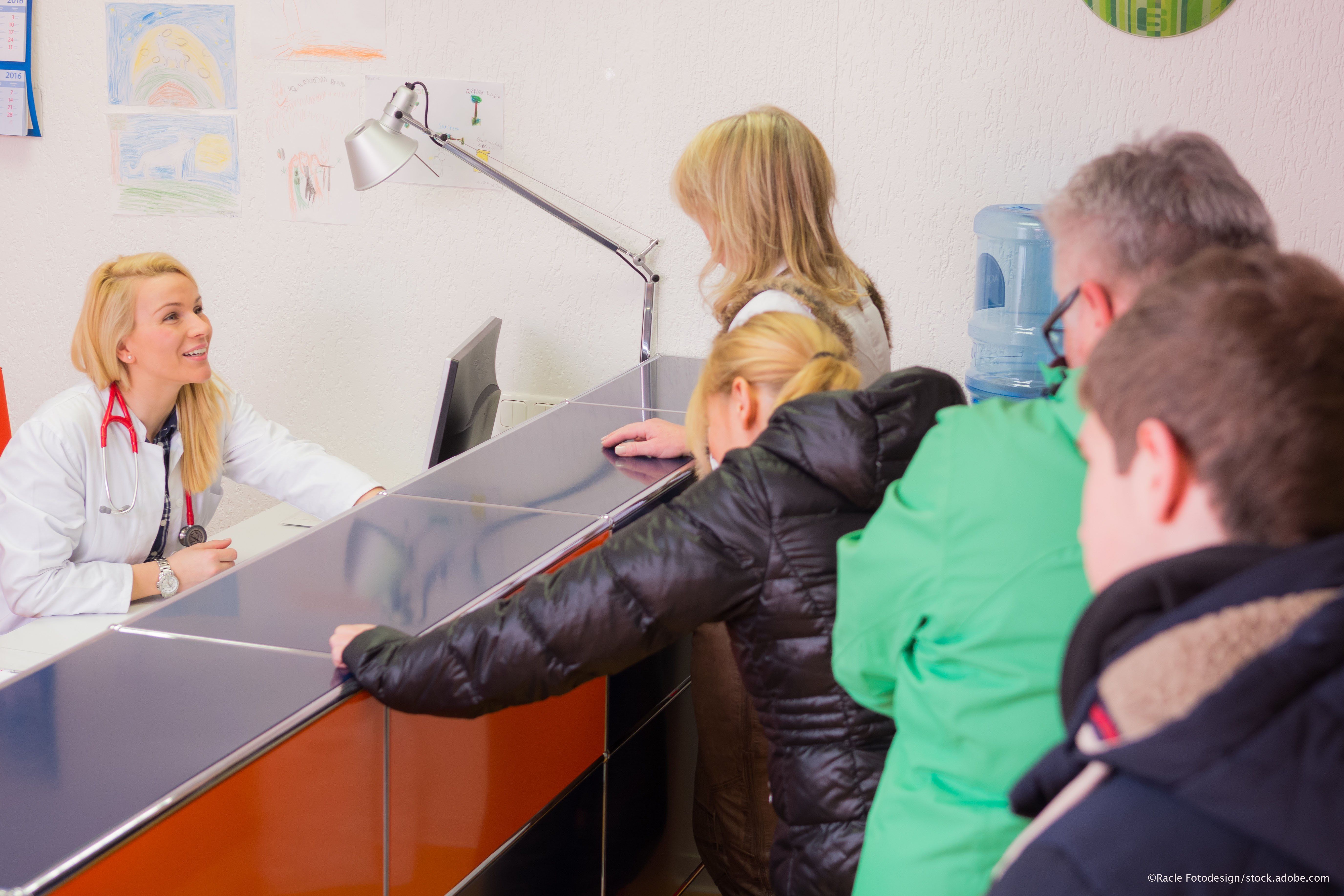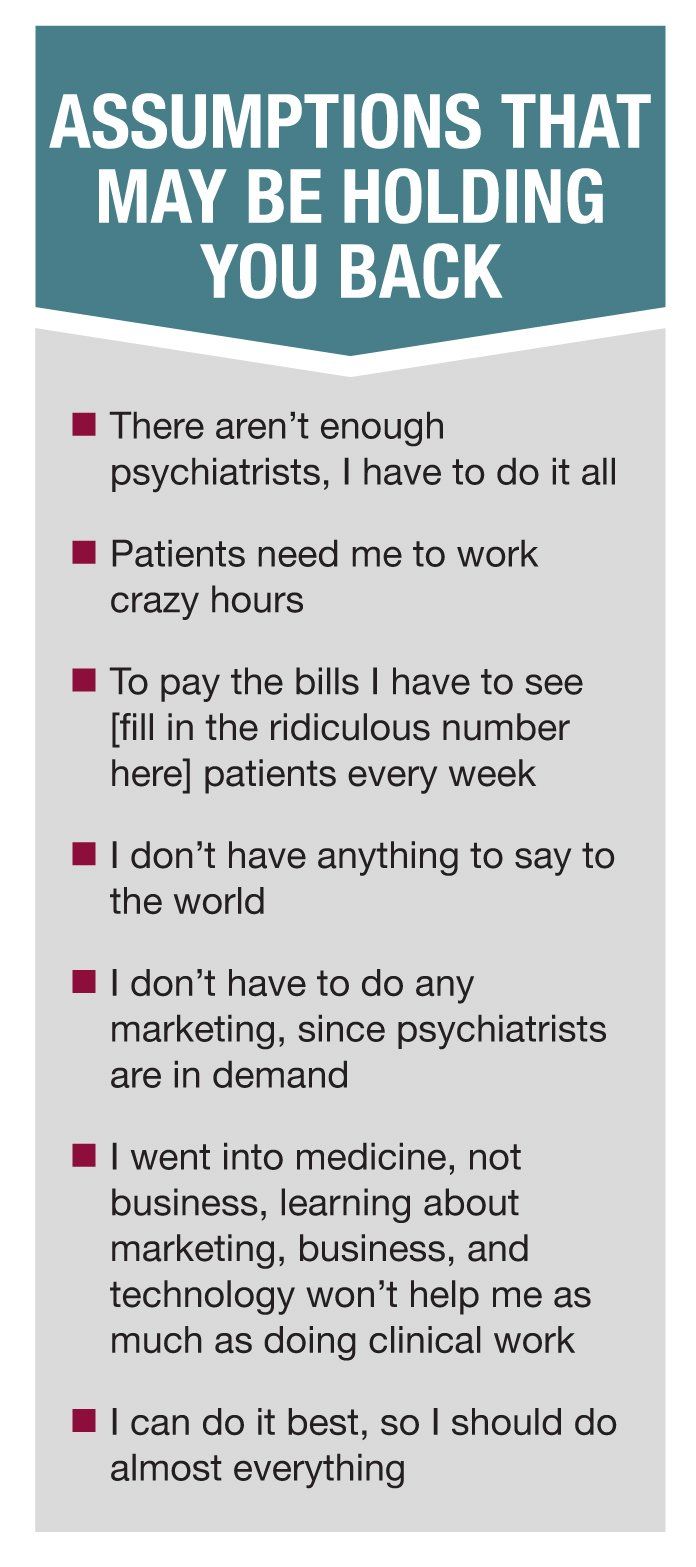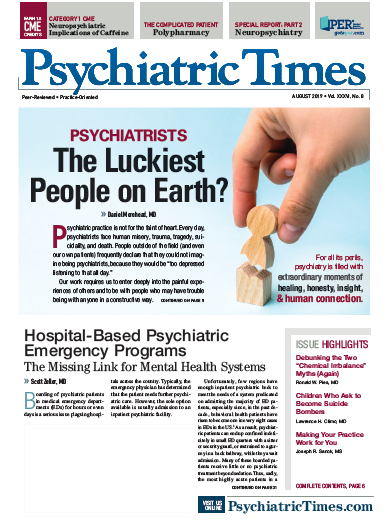Publication
Article
Psychiatric Times
Making Your Practice Work for You
Author(s):
By releasing old assumptions and brainstorming, it is possible to break the old models of private practice and find new ways to be productive within your practice.
©Racle Fotodesign

TABLE

GROWING OPPORTUNITIES BEYOND PATIENT CARE

I have a virtual assistant in Cape Town, South Africa. She helps with my private practice, as well as marketing for my consulting business. When I have an idea, I sketch it out, take a picture and then by the next morning it is a beautiful blog post, worksheet, or resource. “How would I ever use a virtual assistant in my practice?” you might be thinking. I believe that for you to pursue your highest calling and potential, you have to work on only the tasks that you are excellent at doing. In fact, it’s probably most import to eliminate and delegate, more than it is for you to actually create.
Private practice assumptions
Private practice as we know it today is not the result of a grand master plan, carefully constructed. While research informs best practices for clinical decisions, there is less guidance on best practices for running the practice. Instead, practice management is often the result of trial and error, as practitioners and society reacted to studies on best practices, changes in laws, codes of ethics, and rules and responding to socioeconomic factors such as insurance reforms. As a result, many clinicians struggle and grow frustrated.
To make a change and have your practice work for you, you first need to evaluate practice assumptions. What’s the typical mindset? Why do we believe this? Is that true? Next, we move from the global discussion of private practice, into your individual decisions about what type of psychiatrist you want to be. What do you have to say? What issues interest you? What change do you want to see? Next, we need to question the best use of your time. Are you moving toward genuine impact in the field or are you just keeping the practice going? How do you find time when you’re seeing a billion patients? What are others doing to scale beyond their own time? Last, we need to understand how to genuinely grow outside of your time. In doing this, we allow your passion, insights, and ideas to impact the world around you, while also growing your private practice.
Many psychiatrists follow a very traditional practice model (Table). For many this works. But this often leads to the assumption that psychiatrists need to work crazy hours to make a living and serve their patients. Within the current model, that’s often true to make rent, if you’re the practice owner, you need a specific level of gross income. But what if there were other ways to generate income that were not entirely based on your time? What if your skills could be replicated beyond the face-to-face client time that insurance covers? Might we learn something from other fields that are doing this well?
The long-term mistake most people make is starting or joining a practice and going with the current model of modern medicine, which may not work for them and their lifestyles. In fact, usually it is not until a child is born, a parent is sick, or there is some other life disruption that motivates clinicians to start to really evaluate how they are spending their time.
It is helpful to first design your life, which will then inform your business and practice.
1) What would your perfect week look like? How much time would you have to work-out, meditate, and enjoy social activities? What time would you start/end work to have the healthiest family and social life? How much sleep would you get?
2) What experiment could you do to test a change in your assumptions? For example, could you block out Thursday afternoons for golf, commit to being home for dinner four out of five days, or drop off your kids at school every day? What if you tried it for a month or 3 months?
3) Then examine what fell apart during the experiment? An experiment like this will point out the systems and opportunities for change. For example, maybe you need to schedule a different on-call routine. Or maybe an assistant needs additional training on prescription refills.
Highly educated individuals often have a very concrete view of the world. There may be an assumption that if you start a new system, you will have to do it that way forever. But successful business people understand that you can always change and adapt. If, after a month, it is impossible to have dinner with the family four nights a week, change the systems or the experiment.
Examining strengths and productivity
Many psychiatrists get on the treadmill of seeing patients, keeping up with records, and putting out fires in their practice. In doing so, it is easy to miss the redundancies and inefficiencies in their practice. For example, if a front desk staff member needs to type a date of birth 15 times for an intake and three times for progress notes, that is a waste of time. Even though it may be 2 minutes here and 3 minutes there, all of it adds up to lost time and money. Imagine a patient is billed after the appointment, only to be sent five more letters until he or she pays. There are numerous electronic health record programs (EHRs) that allow a credit card to be billed when insurance is paid.
These essentials will be unique to each practice, but there are several common categories that will assist your evaluation.
1) TECHNOLOGY: What systems can automate each phase of the practice from patient experience to clinical work to accounting?
2) ASSISTANTS: What tasks are essential for a person? If they cannot be automated through technology, what will it take for an individual to be competent in this task?
3) EXTERNAL SYSTEMS: What external systems cause waste within the practice? This could be insurance companies that do not pay on time or local regulators. Evaluate from where most patients come for the greatest hourly return.
In the book, The One Thing, authors Gary Keller and Jay Papasan repeat the question, “What’s the one thing I can do such that by doing it everything else will be easier or unnecessary?”
Online productivity guru, Rory Vaden, has a tool he calls the Focus Funnel, in which he asks the questions:
• Can this task be eliminated?
• Can I automate this task?
• Can I delegate this task?
• Do I need to concentrate on this task or should I procrastinate on purpose?
Whether it’s an email, meeting, or denied insurance claim, tasks suck time and energy from you. Most of the time it is unnecessary. Even worse, it stops you from putting time into the ideas that could genuinely have an impact on the world, make your schedule easier, and create space to innovate. By asking, “What’s the very best use of my time?” you can clearly identify what you need to outsource to an assistant or virtual assistant.
Better than a new best friend-the virtual assistant
What is a virtual assistant? A virtual assistant (VA) does not physically work in your office. This could be a medical biller who lives in Houston, a scheduler who answers live but lives in Florida, or a graphic designer in South Africa. So, why hire a virtual assistant?
The clearest reason to hire someone virtually is that you save money. You don’t have to find a space for them. VAs typically have their own tools, like a computer and phone. Also, most VAs are paid by the project or only for time when they work. So, you’re not paying for someone to sit in an office for 40 hours a week. Instead, they may be in a shared workspace, a home office, or sitting at their dining room table. A typical private practice might have a four office suite with a reception area. If this were automated, the VA might answer phones, onboard new patients before their appointment, and schedule additional appointments virtually. If that additional space is used, that could save 20% to 30% on rent. Then add the productivity side as well and that 40-hour week may only be 25 hours.
Before we go too far down this path, there are obvious objections:
• How do I know they are following HIPAA?
• What is the liability?
• Is it legal?
• What does the code of ethics say about this?
I’m not an attorney and as a rule you should never take legal advice solely on one article you read. Each state and city has its own laws, rules, and boards that may have a say in this, so consult an attorney on your model and contracts. Legal best practices abound for this. Something as simple as a Business Associate Agreement can outline the limits of HIPAA, disclosure to patients, and methods to ensure legal and ethical confidentiality. Assuming the legal and ethical side has been covered, how do you start outsourcing to take tasks off your plate?
In his book, Virtual Freedom, Chris Ducker outlines an exercise that is helpful. Take out a sheet of paper and make three columns:
• Don’t Like Doing
• Can’t Do
• Shouldn’t Do
In this activity, you identify tasks in your day that you don’t like doing, can’t do, or shouldn’t do. These are all opportunities to outsource work to another individual.
What types of tasks are private practices outsourcing? Here is a list of the most frequently outsourced tasks in a private practice:
• In-coming phone calls, reminder calls, and scheduling
• Insurance billing
• Social media marketing
• Maintenance of electronic health records
• Website updates
• Delivery of office supplies, water, or beverages for patients
• Monitoring and responding to emails
• Resource and video editing
• Case management and ancillary services
• Electronic prescription delivery
• Accepting and processing payment immediately
Taking it to the next level: growing beyond your practice
The opportunities for psychiatrists are immense if you can challenge the typical model. For example, numerous private practices have worked to grow billable services outside of the clinician’s hours. Here are some questions that allow you to identify key opportunities for your practice:
1) What other services are your patients already paying for (eg, mental health counseling, massage, acupuncture, health coaching)?
2) What lifestyle choices do you wish your patients would make (eg, increased exercise, changes in nutrition, improved sleep)?
3) What specialties could be developed that are needed in your community (eg, more focused work on trauma, EMDR, support groups)?
By collaborating with an assistant, it is possible to grow and scale your practice beyond your own time. The following example may be helpful.
Dr Matthews sees 50 patients per week. She focuses on teens with emerging mental health issues. However, several of the parents have requested to start seeing her. She has noticed an increase of mental health issues around anxiety and depression. She knows she can’t see more people because she has designed her schedule to accommodate her personal life. However, she doesn’t want to miss this opportunity.
She asks her assistant to design a survey for each patient to complete while waiting for their appoints. The survey has three main questions:
• What services are you currently using outside of our office that support your mental health (please include services you plan to use in the next 6 months such as mental health counseling, massage, or other mental health support services)?
• What services do you wish we offered here?
• How would your life be different if we offered these services here?
Based on this survey Dr Mathews discovers that her current patients would like to have mental health counseling and support groups to assist with psychiatric medication reviews. Over the next 6 months, Dr. Matthews hires two Master-level clinicians to run groups and offer counseling 10 hours per week. She also hires a virtual assistant through MoveForwardVirtualAssistants.com and a medical billing company to help manage patient calendars. Here’s what happens:
1) Each clinician does 8 individual or family sessions per week with an average reimbursement of $92 per session: $1472 per week x 4 weeks = $5888
2) Her new biller charges 5% collected: $294.40
3) Her new virtual assistant does scheduling and is paid when working. The cost is $395 per month through the company.
4) Dr Matthews optimizes her own office so that current space is used for the sessions, that way they occur in the evenings or on weekends, when she’s not in the office. No additional rent.
Dr Matthews makes an additional $5,888 gross minus the $689 administrative expenses to equal $5,199 per month or $62,388 gross annually. She compensates that master-level clinicians at 40%, which increases overall expenses by $24,955.20. This gives Dr Mathews an annual net profit of $37,432.80.
In the start-up phase, Dr Matthews had additional costs such as her attorney, accountant, and legal forms. As well, there might be additional costs such as a new EMR like Therapy Notes or additional phone lines or email. Dr Mathews also had to check state employment law to determine if the clinicians should receive 1099 or W2 forms. But you get the point. This is one example of how simply a practice can begin to shift beyond the face-to-face income earned by a psychiatrist.
Moving forward to endless possibilities
By releasing old assumptions and brainstorming, it is possible to break the old models of private practice and find new ways to be productive within your practice. The creativity and flexibility of virtual assistants and real assistants can help relieve burnout, increase happiness and fulfillment, and increase your income. Just imagine what your practice might look like if you fully optimized your time and thought about how to make an impact on the world beyond the walls of your practice.
Disclosures:
Mr Sanok is the Founder of Practice of the Practice. He is a TEDx speaker, business consultant, and has the No. 1 podcast for private practices, The Practice of the Practice Podcast. Joe is passionate about helping practice owners to optimize their practices and launch big ideas, all within the context of designing their lifestyle. He offers the one-week intensive for practice owners, Slow Down School, and has numerous resources on his website. To schedule a time to talk with him go to www.PracticeofthePractice.com/apply.
Dr Sanok reports no conflicts of interest concerning the subject matter of this article.






